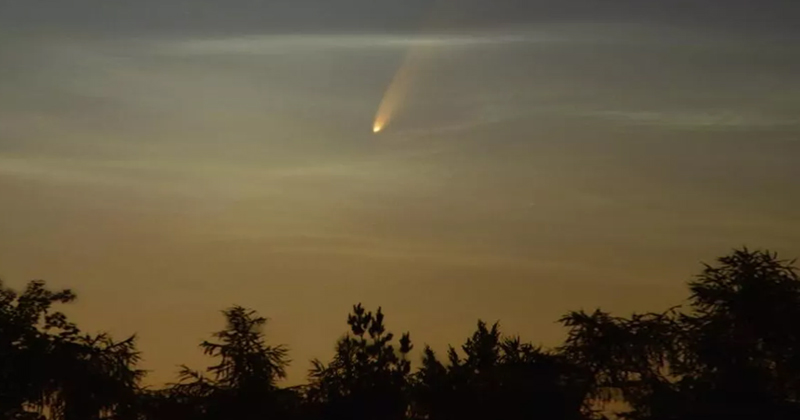Every 5000 to 7000 years, the comet Neowise comes so close to Earth that it can be seen with the naked eye and now the time has come again. On July 23rd, Neowise will be closest to Earth as it will fly past our planet at a distance of 103 million kilometers and it can be seen with naked eyes at night.

The comet Neowise is already appearing in the north-northeastern starry sky at around three in the morning before it is outshone by the rising sun. How bright the glowing point with its tail will shine at its closest approach to Earth, is still completely unclear. Comets are always a bit unpredictable. It is also uncertain from where it can be seen.
The rare visitor Neowise was only discovered in March of this year by the recently reactivated Neowise space telescope, from which it got its name. The telescope orbits continuously around the earth and looks for unknown celestial bodies.
You Can See the Comet From July 15th to July 25th
The comet Neowise with the sober name C/2020 F3 can be seen in the sky until about the end of the month, first with the naked eye and later with binoculars. For inexperienced observers, the best observation period is between July 15th and 25th. At present, the bright tail star appears just before dawn, under optimal observation conditions. It appears extremely low on the horizon.
Suggested Read: How Dangerous are Meteorites? Are they Nature’s Bullets for Us?
Comets are Leftovers From the Solar System Formation
Comets often pass the sun, but most of them can only be seen through telescopes. In contrast, the spectacularly bright comets such as the splendid Hale-Bopp comet and Hyakutake comet from the 1990s are extremely rare. Comets are considered to be the remains of the formation of our solar system around 4.6 billion years ago.
They are often compared to giant snowballs made of ice, dust, and stone. When these chunks approach the sun on their journey through space, they often form tails of gas and dust.
Suggested Read: How Can You Build a Base on the Moon?
This tail is the reason that comets are easily observable. Watching Neowise is a rare opportunity that only presents itself after 5000 to 7000 years, putting the human life span on earth into perspective.


